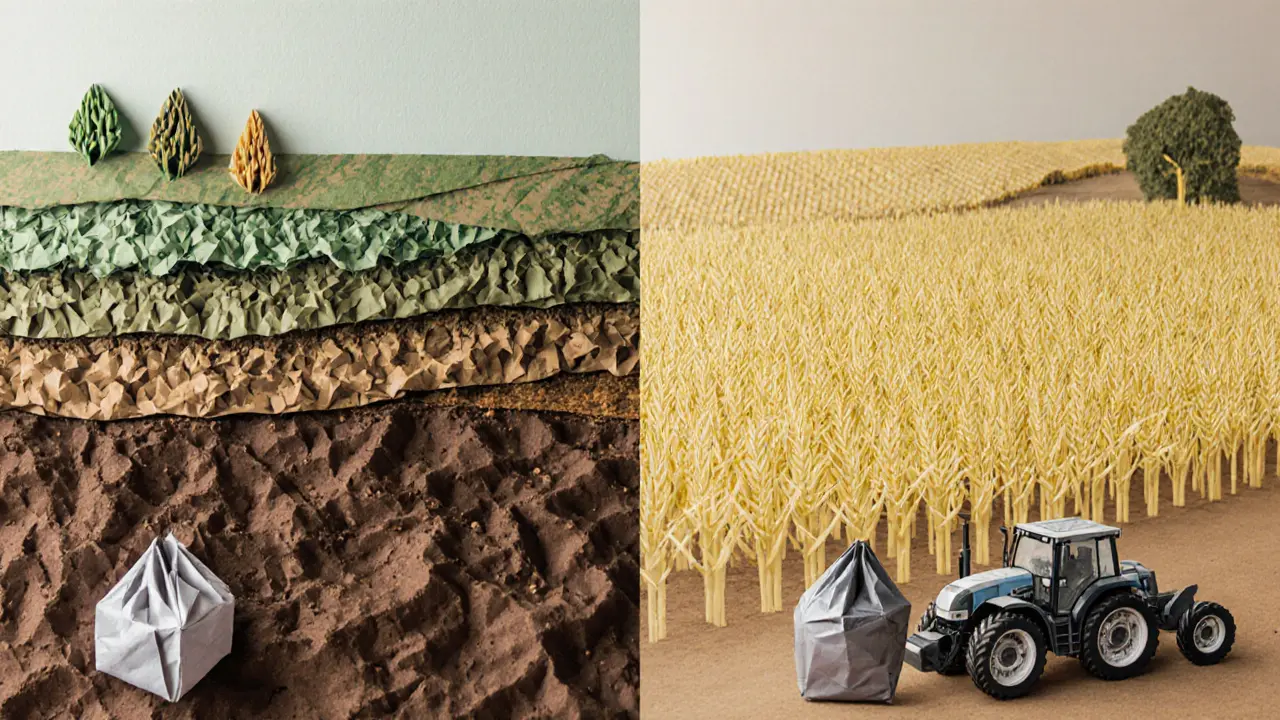Unsustainable Agriculture: Risks, Impacts, and Real‑World Examples
When talking about unsustainable agriculture, farming practices that exhaust resources, degrade ecosystems, and fuel emissions. Also known as non‑sustainable farming, it drives soil loss, water scarcity, and biodiversity decline. One of its most direct effects is soil degradation, the reduction of soil fertility and structure caused by over‑tilling, chemical overuse, and erosion, which in turn lowers crop yields and threatens long‑term food supply.
Why It Matters for the Planet and Your Plate
Unsustainable agriculture accelerates deforestation as forests are cleared for cropland, a link confirmed by satellite data showing a rise in forest loss alongside expanding commodity farms. This loss of trees deforestation, the permanent removal of forest cover for agriculture or other uses reduces carbon capture, directly feeding into climate change, global warming driven by greenhouse‑gas emissions from land‑use change. The chain reaction—deforestation → higher CO₂ → more extreme weather—feeds back into farms, making unsustainable practices even harder to sustain.
Beyond the environment, the practice jeopardizes food security, the ability of populations to obtain safe, nutritious food consistently. As soils lose fertility, yields drop, prices climb, and vulnerable communities face scarcity. In contrast, regenerative agriculture, a set of techniques that rebuild soil health, sequester carbon, and enhance biodiversity offers a path to repair the damage. Understanding these connections helps you see why shifting from unsustainable to regenerative methods is not just trendy—it’s essential for a stable food future.
Below you’ll find a curated collection of articles that dig into each of these angles, from the science of soil loss to policy solutions that curb deforestation. Dive in for practical insights and data‑driven analysis that can guide better decisions in farming, investing, or simply staying informed.

